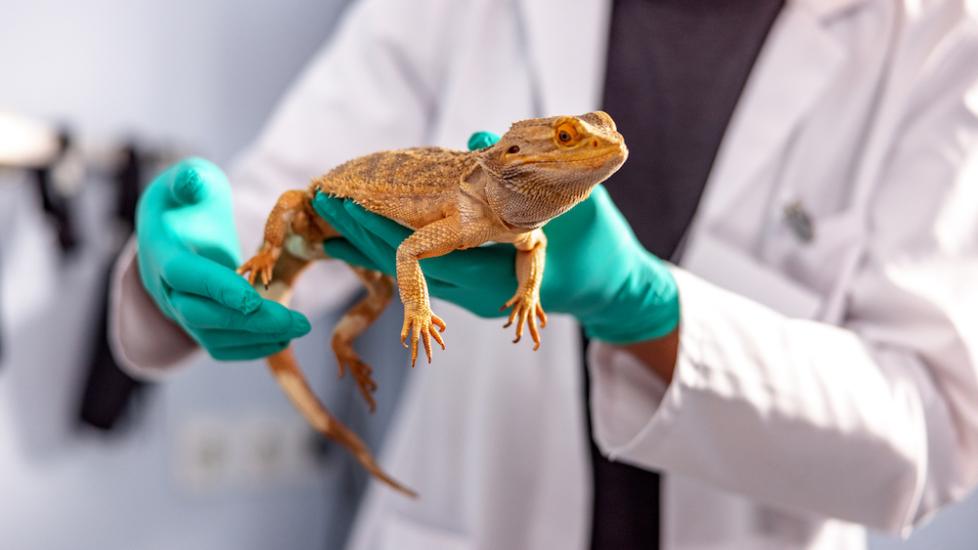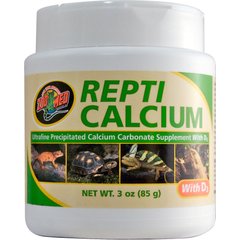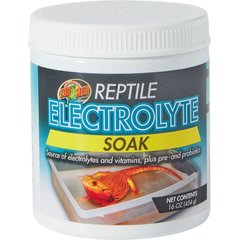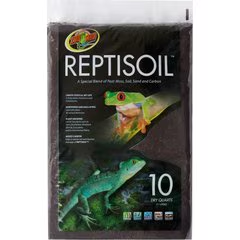Respiratory Infections in Reptiles
What Are Respiratory Infections in Reptiles?
Respiratory tract infections are infections within the breathing structures, including the mouth, nose, sinuses, trachea (also known as the windpipe), and lungs. Respiratory infections are common ailments in many reptile species with various causes.
Respiratory infections can also be referred to as pneumonia since they are bacterial, viral, parasitic, fungal, or a combination. Reptiles are particularly susceptible to respiratory infections if kept in sub-optimal living conditions, which is why proper care is crucial to meet each species’ specific requirements.
Respiratory diseases can become life-threatening if left untreated. Respiratory distress is a medical emergency requiring immediate veterinary attention.
Symptoms of Respiratory Infections in Reptiles
Respiratory infections can cause a variety of symptoms in reptiles. Clinical signs may be subtle initially, as many reptile species are masters of disguising their illnesses. Veterinarians encourage pet parents to observe their reptile’s behaviors as often as possible to establish baseline behaviors. By doing this, pet parents may notice small changes in behavior, leading to faster veterinary intervention.
Reptiles may only show one or two clinical signs of respiratory distress. These clinical signs include:
-
Nasal discharge
-
Oral redness
-
Increased respiratory rate
-
Increased respiratory effort
-
Uneven floating/swimming (aquatic species)
-
Decreased appetite
-
Wheezing
-
Weight loss
-
Dull mentation
-
Lethargy
-
Open-mouth breathing
-
Outstretched neck
-
Death
It is important to note that because reptiles are ectotherms (often called “cold-blooded”), they cannot regulate their body temperature. Instead, their body temperature relies on the environment around them. Therefore, reptiles will not have an increased temperature, or fever, secondary to infections like many other animals.
Causes of Respiratory Infections in Reptiles
Reptiles require consistent and specific husbandry for optimal health. Husbandry includes proper temperature, humidity, lighting, UV sources, diet, vitamin supplements, terrarium/aquarium space, and water quality. If these needs are not met, a reptile can become very sick, commonly with respiratory infections and multiple other metabolic, reproductive, ocular, skin, and bone diseases.
Good reptile husbandry is the core of a pet reptile’s overall health. Overcrowded, unhygienic conditions and stress contribute to the spread of respiratory disease. Reptiles in these conditions are weak, with fewer defenses that allow pathogens to invade and cause illness. However, it is necessary to note that even reptiles with proper husbandry can develop respiratory diseases, but it’s less common. Common causes of respiratory tract infections include:
-
Bacterial respiratory diseases: Bacterial mouth infections (stomatitis) can spread from the mouth to the respiratory tract as a secondary effect. Bacterial agents include mycobacteria, Pseudomonas, Salmonella, Chlamydia, E. coli, and Klebsiella.
-
Viral respiratory conditions: Common in domestic reptiles and can easily spread between individuals. Pet parents should quarantine all new individuals within the household, typically for at least 3-6 months, based on veterinary advice. Viral infections include paramyxovirus, nidovirus/serpentovirus, inclusion body virus (reptarenavirus), reovirus, and herpesvirus.
-
Fungal infections: Take advantage of a underlying disease, weakness, malnutrition, and poor husbandry. Fungal infections include snake fungal disease and Aspergillus.
-
Parasitic respiratory conditions: Can come from other reptiles, diet, or the environment. Parasites in reptiles causing respiratory infection include roundworms, coccidia, and flatworms.
-
Other diseases: Trauma to the respiratory tract, neoplasia, and heart disease. These are not infectious; however, veterinarians must consider these respiratory diseases when diagnosing a pet reptile with a respiratory illness. Often, reptiles with these diseases have concurrent infectious diseases, as well.
Risk Factors for Respiratory Infections in Reptiles
The number one risk factor for reptiles acquiring respiratory disease is a lack of suitable husbandry or routine veterinary care. Old, young, and immunocompromised reptiles are at additional risk for developing respiratory infections, and proper husbandry and veterinary care are even more critical in these groups. Stressed, sick, malnourished, or otherwise unhealthy individuals often acquire respiratory infections, which they cannot fight adequately due to a weakened immune system.
How Veterinarians Diagnose Respiratory Infections in Reptiles
Veterinarians will require a thorough history, including a detailed list of the reptile’s husbandry which may aid in the diagnosis. Veterinarians may suspect respiratory infections based on the physical exam alone, specifically nasal and oral discharge and louder breathing noises.
Typically, the next diagnostic step to diagnose respiratory illness involves radiographs (X-rays.) Veterinarians use radiographs to examine the inside of the body and look for changes consistent with fluid, masses, inflammation, or other signs of infection within the lung tissues.
Routine blood work (complete blood count and blood chemistry) and a fecal sample evaluation are also beneficial in determining other underlying conditions that may complicate a pet’s recovery. Respiratory pathogen testing, such as PCR testing, can identify the DNA of specific pathogens.
Some reptiles require sedation to safely obtain routine diagnostics, which can be dangerous in a critically ill patient. If it is safe for the reptile, most veterinarians will attempt to obtain blood work and radiographs without sedation. However, if the pet becomes too stressed for these procedures, mild sedatives or complete anesthesia may be the best option.
While routine testing does not always require sedation, other diagnostics require deep levels of sedation and anesthesia. Such diagnostics include lung washes, which involve intubating the pet and flushing the lungs with sterile saline. During this process, veterinarians collect samples deep within the respiratory tract for analysis, including cytology and culture. PCR testing may be utilized from these samples, as well.
To obtain a diagnosis in more complicated cases, veterinarians can use advanced imaging, such as CT, MRI, TEM, and bronchoscopy. These procedures require sedation and anesthesia.
Treatment of Respiratory Infections in Reptiles
Veterinarians alter the treatment of respiratory disease depending on the root cause of infection. However, veterinarians often cannot find a particular reason for the pet’s illness. In these cases, veterinarians may administer the following drugs:
-
Antibiotics (i.e., enrofloxacin, ceftazidime)
-
Anti-parasitic drugs (i.e., ivermectin)
-
Anti-fungal medications (i.e., itraconazole)
Often, treatments are injectable, not oral, due to easier administration and better absorption in reptiles. Some pathogens, especially some viruses, do not have a specific treatment. Supportive care and treatment to prevent secondary infections may be helpful in these cases. Supportive care includes fluid therapy, heat support, potential oxygen therapy, and improved husbandry.
Overall care plays a vital role in the recovery of respiratory infections. Temperature is crucial for a successful recovery. Improper temperatures allow pathogens to replicate more efficiently while also causing the reptile additional stress and decreased healing abilities.
Veterinarians often encourage pet parents to keep their sick reptiles on the higher end of their temperature range during healing. Pet parents and veterinarians should work together to determine any changes required in the pet’s diet and environment.
Proper husbandry cannot be stressed enough for reptile species' successful recovery and long-term survival. While there is no proven or recommended home remedy to treat upper respiratory infections in reptiles, proper husbandry can prevent most respiratory infections.
Recovery and Management of Respiratory Infections in Reptiles
Unfortunately, respiratory infections are often relatively advanced when pet parents recognize a problem. Animals with progressive disease may succumb to their illness, but with aggressive, prompt care, these pets can recover fully. The recovery process may include supportive care at a veterinary hospital and continued care at home. Pet parents should expect slow but gradual improvement taking weeks or even months.
Depending on the cause of infection, reptiles may be more prone to respiratory disease recurrences in the future. They may require periodic treatment, routine veterinary screening and care, as well as ensuring proper husbandry.
Respiratory Infections in Reptiles FAQs
What do reptiles look like when they're sick?
Sick reptiles often show vague, subtle signs. Early in the disease process, reptiles often have a decreased appetite or slight lethargy. Untreated, these pets will progress to more noticeable signs of increased respiratory rate, effort, and potentially death.
How do I know if my reptile has a respiratory infection?
Only a veterinarian can diagnose a respiratory illness in pets. Seek immediate veterinary care if your pet shows any signs of respiratory distress.
Featured Image: iStock.com/AzmanJaka
References
Bartolini, Pia. VIN/ARAV Rounds: Respiratory Infections in Reptiles. 2020.
Divers, Stephen J. Merck Veterinary Manual. Parasitic Diseases of Reptiles. 2022.
Divers, Stephen J. Merck Veterinary Manual. Disorders and Diseases of Reptiles. 2022.




